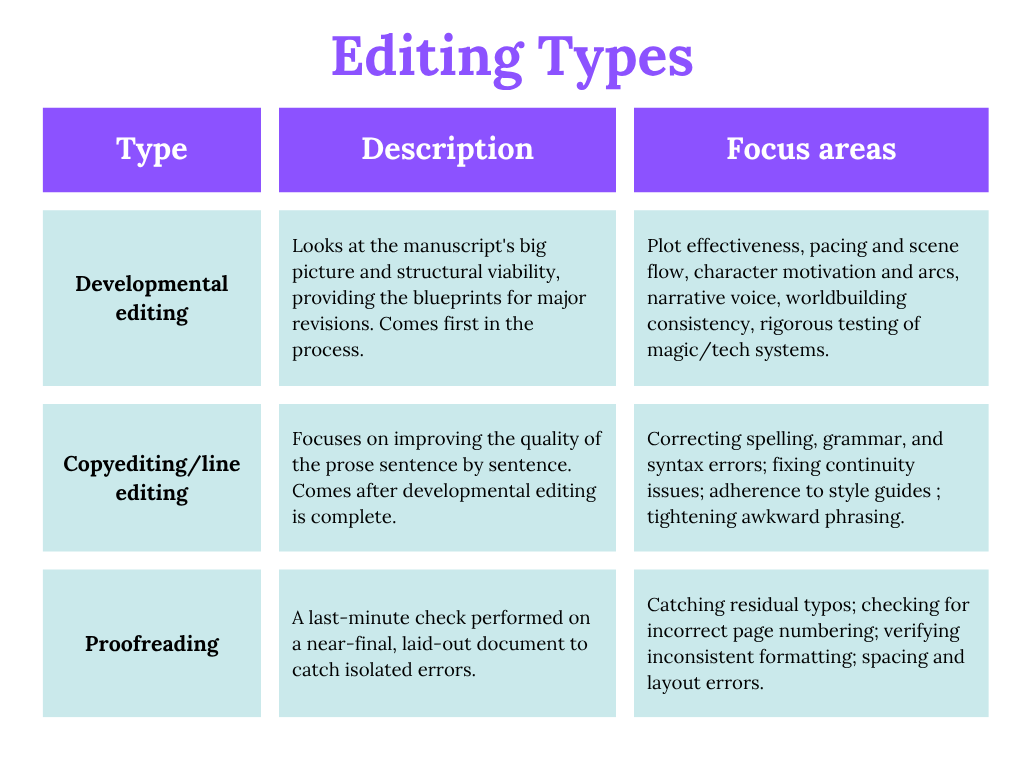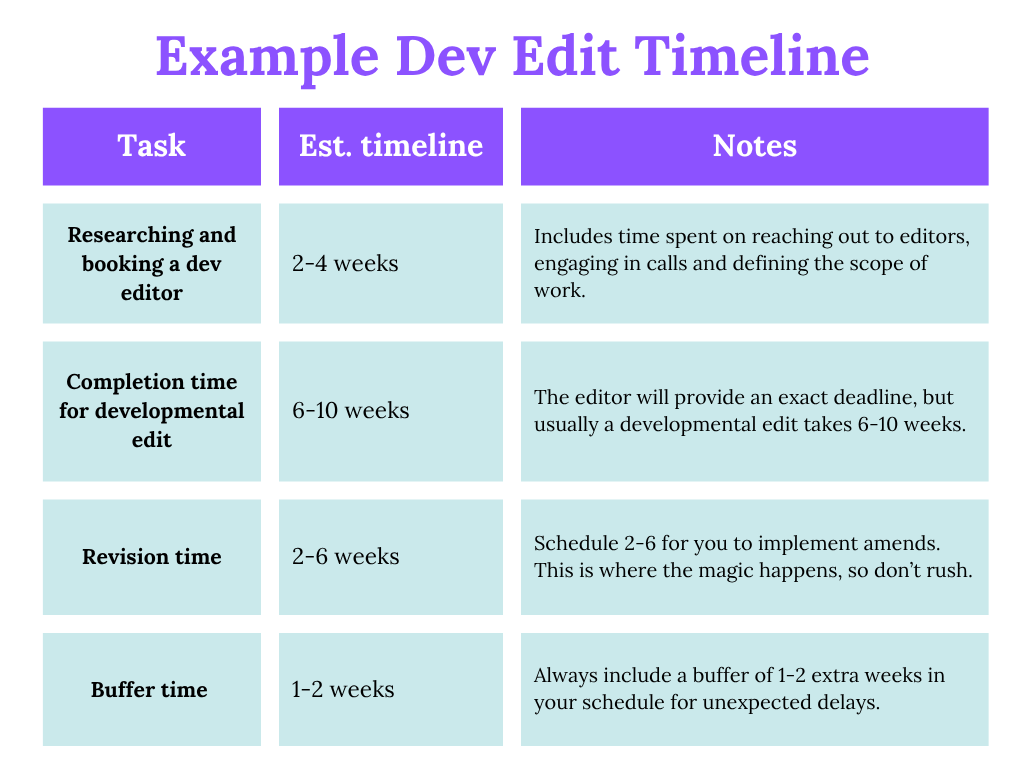5 Costly Mistakes Self-Published Fantasy Authors Make When Hiring a Developmental Editor
Your investment in a developmental editor is the most crucial step in self-publishing your speculative fiction novel. It’s what separates a polished, sellable book from a rough first draft.
The self-publishing market will hit $20 billion in the next twelve months, underscoring the massive commercial opportunity for authors who get their books right.
The process is even more complex for authors in the demanding speculative fiction genre (e.g., fantasy and sci-fi). Your worldbuilding and cast of characters require an editor with specific genre fluency. Even a slight mismatch in your vision and your editor’s execution can lead to delayed launch dates and friction in your professional relationship.
As a developmental editor for spec fiction novels, I’ve seen these five avoidable mistakes derail self-publishing timelines. Let’s take a look at what they are and how you can avoid them.
Mistake #1: Confusing Editing Levels and Packages
You might fire off an email asking for a ‘full edit.’ But if you don’t have an understanding of the distinct levels of service required for a publishing-ready novel, you risk spending unnecessary budget.
A speculative fiction manuscript requires a minimum of three distinct phases to move from a first draft to print:
Developmental Editing
Developmental editing services are the architectural phase of the editing process. Dev editing focuses entirely on your manuscript's big picture, ensuring the foundational elements of your storytelling can support a full novel or enticing short fiction.
A developmental editor analyses the structural viability of your manuscript and provides the blueprints for major revisions. It comes first in the process, and a developmental editor will look at things like:
Analysing the effectiveness of your plot: Is the central conflict compelling? Are there any gaping plot holes or anticlimactic resolutions?
Refining pacing and flow of scenes: Identifying areas where the narrative drags to ensure optimal tension building.
Assessing character motivation and arcs: Checking that the protagonist's internal journey aligns believably with the external plot and that their decisions are consistent with their established traits.
Reviewing narrative voice: Ensuring the voice is distinct and consistent, and the tone matches the intended subgenre.
Checking worldbuilding consistency: Scrutinising the logic of your world, e.g., does the geography make sense?
Testing the rules of your magic systems: Verifying consistency in your magic or technology, which is crucial for speculative fiction novels.
Copyediting/Line Editing
Copyediting and line editing come after developmental editing, and they’re all about improving the quality of your prose. A copyeditor/line editor will work sentence by sentence to improve the clarity and flow of your writing. They’ll:
Correct spelling, grammar and syntax errors
Fix continuity issues
Adhere to style guides
Tighten up any awkward phrasing
Proofreading
Proofreading is the final step in the editing process, and it is a last-minute check to catch final errors in the document. A proofreader looks for typos that slipped through the cracks, such as:
Incorrect page numbering
Inconsistent formatting
Spacing and formatting errors
Example Mistake: Hiring an All-in-One Editor
An author hires a developmental editor but secretly expects them to also fix every comma and typo. If the editor has to stop to correct spelling errors, they can’t fully immerse themselves in the deep structural analysis the author hired them for in the first place.
How to Avoid It: Understand the Process
Clearly budget and schedule for multiple specialist editors as necessary. Hire a developmental editor first to fix the foundation. When those revisions are complete, you can pass your manuscript to a separate copyeditor/proofreader for the final polish. A best practice is to always communicate your expectations clearly and never assume one editor will perform all tasks.
Mistake #2: Underestimating the Self-Editing Commitment
It’s common for developmental editors to provide comprehensive feedback requiring major revisions, involving things like cutting scenes or even rewriting character motivation. It’s not a developmental editor’s job to implement amends for you; it’s our job to guide you through the changes. If you don’t schedule time for revisions, you’ll be lumped with a workload you don’t have time for.
Example Mistake: Failing to Anticipate Review Time
When the developmental report arrives, the author is overwhelmed by the sheer volume of work. It's not because the editor is being harsh, but because the author hasn’t anticipated the time and effort required to implement the feedback.
How to Avoid It: Dedicated Feedback Time
The key to avoiding this expensive mistake is recognising that the editorial report provides the architectural blueprints; you are the builder. Schedule feedback implementation into your publishing deadlines. The sheer volume of a developmental edit report can feel overwhelming, so it’s important to work thematically to stay focused and stress-free.
Mistake #3: Handing Over a Mega Messy Draft
A cleaner manuscript allows your developmental editor to give you highly specific, actionable structural feedback that you can implement efficiently. By completing this necessary pre-work, you ensure your editor's focus is 100% on the structural integrity of your novel, not on distracting clean-up.
Example Mistake: Leaving Loose Errors
Imagine a developmental editor expects to complete a comprehensive structural analysis. The first 50 pages contain repetitive word use (e.g., ‘just,’ ‘really’) that could’ve easily been avoided with a basic self-edit. Instead of focusing on the high-level developmental commentary they were hired for, the editor must waste time performing a basic copy-edit.
How to Avoid It: Invest Time in Self-Editing
Complete a serious, dedicated self-edit pass first. Before sending your manuscript to a professional, focus solely on cleaning up things like:
Basic formatting: Ensure your manuscript is formatted to industry standards (e.g., 12pt Times New Roman, double-spaced) to prevent confusion and improve readability for the editor.
Repetition: Search and destroy repetitive and unnecessary filler words.
Consistency: Use your internal world bible (character names, locations, magic rules) to check for continuity errors.
Mistake #4: Forgetting to Provide Supporting Materials
Aside from early-stage beta readers, a professional editor might be your first audience; they need context to serve you best. This fact is particularly true for speculative fiction, as the editor is jumping into a world they know nothing about.
Example Mistake: Submitting a Speculative Fiction Manuscript Without Additional Info
An author sends only the manuscript file and a brief email saying, "It's a sci-fi book, let me know what you think!" This straight-to-the-point approach forces the developmental editor to spend their paid time piecing together your vision and expectations. The time should be spent on tasks like analysing the effectiveness of your protagonist’s arc, not trying to figure out if your book is YA or Adult fiction.
How to Avoid It: Provide Extra Info
Submit a complete ‘Editor’s Package’ with your manuscript. This package should include:
A Detailed Synopsis (2-3 Pages): A comprehensive plot summary, including the ending. Nope, this step doesn’t spoil the ending; it prevents the developmental editor from flagging issues you already resolved in the final chapter.
Target Audience/Subgenre: Clearly state the subgenre (e.g., epic fantasy) and the target audience (e.g., YA). Name 2-3 competing titles (books similar to yours) to set the editorial tone.
A ‘world guide’: You can put together a concise one-page document listing the rules of your magic system and the names of key characters and places. This step preempts continuity comments.
Mistake #5: Setting Rigid and Unrealistic Timelines
One of the most appealing benefits of self-publishing is that you can move at your own pace and be as speedy as you like. However, rushing the developmental editing process is never worth the risk of a poor-quality final draft, particularly when speculative fiction requires intricate backstories and worldbuilding.
Example Mistake: Being Inflexible With Deadlines
An author contacts a developmental editor demanding a three-week turnaround for a 120,000-word novel, citing an immovable launch date they set six months ago. The editor agrees, but the accelerated timeline means the editor must cut short the deep, reflective analysis required for a thorough developmental edit. The pressure then passes to the author, who rushes the revisions, leading to a flawed final draft.
How to Avoid It: Great Scheduling
It’s important to set a realistic and moderately flexible publishing timeline that prioritises the quality of the edit. Here’s an example timeline:
Get Comprehensive and Creative Developmental Editing Guidance Today
The self-publishing journey is challenging enough without unnecessary friction and costly revisions. Luckily, these mistakes are totally avoidable with the right preparation. Your speculative fiction novel deserves a developmental editor who understands the nuances of your genre, so you can stop worrying about structural missteps and start focusing on your book launch.
At EV Editing, I work closely with you every step of the way, guiding you in turning your manuscript into a polished, page-turning masterpiece.
Ready to invest in expert-level structural feedback?



